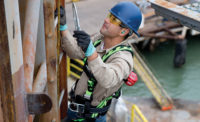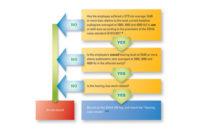
The science of hearing loss uses the concept of “noise dose” to establish an equivalent relationship between different combinations of noise levels and durations of exposure. As either the noise level or the duration of exposure goes up, so does the dose.
Damage risk criteria are developed using mathematical modeling based on studies that show the dose-response relationships. These studies show that, in general, the ear sustains damage after about an eight-hour exposure to noise of 80 decibels.
In hearing conservation, nearly every occupational noise exposure standard around the world expresses the balance of noise and duration through a Permissible Exposure Limit (PEL) or criterion level for noise. Such limits are set based on an analysis of specific health risks and the cost/benefit of limiting exposure to that hazard. For noise, OSHA and most other U.S. standards set the PEL at 90 dB of noise exposure over an eight-hour time period. Worldwide, the majority of PELs for noise are set at 85 dB over eight hours.
In fact, NIOSH estimates that about 92 percent of workers should be safe from noise-induced hearing loss over their lifetime of exposures if they are protected to an average exposure equivalent to less than 85 dB over an 8-hour shift [NIOSH Criteria Document (1998) http://www.cdc.gov/niosh/docs/98-126/chap3. html].
Hearing protection: steps to success
There are several actions we can take to promote hearing safety by preventing an “overdose” of noise:
- Engineering controls (limit the noise level at its source)
- Administrative controls (limit individual exposure time)
- Personal protective equipment (hearing protectors)
Recent advances in intelligent hearing pro- tection technology enhance our ability to protect people from hazardous noise exposures and measure one’s daily dose. Earplug fit-testing systems can measure how well hearing protection works for each individual, and in-ear-dosimetry technology measures exactly how much noise reaches the ear, even with hearing protection.
These new tools enable workers to use hearing protectors better and to improve selfefficacy. Self-efficacy is defined as a person’s belief about his or her ability and capacity to accomplish a task or the power or capacity to produce a desired effect: effectiveness. Your sense of self-efficacy plays a major role in how you approach goals, tasks and challenges, including the use of personal protective equipment (PPE). If you know how to use PPE and trust it to protect you, you are more likely to use it appropriately.
A key to worker empowerment is quantitative feedback, be it on the fit of earplugs or on the overall noise dose experienced during the course of the workday. This feedback is critical to worker empowerment — and to the success of any hearing conservation program.
Quantitative feedback
With earplugs, providing quantitative feedback helps the individual recognize a poor fit compared to a good fit. In a recent trial, volunteer construction workers completed two to four quick fit testings of their earplugs. When the volunteers were ready (some after only one or two practice tests, others after three), they performed their final quick fit-test and were asked to report the level of attenuation (noise reduction) they thought they were getting by 5 dB increments.
- Over half predicted their attenuation within the correct 5 dB increment.
- Only 11 percent were “off” by more than one 5 dB category in their self-assessment of the amount of attenuation for a given ear.
- Half of those erroneous self-assessments underestimated the protection level, and half overestimated the protection level.
- Three of the four individuals who had erroneous self-assessments were, in fact, consistently achieving adequate levels of attenuation for their noise environment.
Real-time feedback
In-ear dosimetry provides an even greater level of personal feedback. The in-ear dosimeter is a continuous monitor of a worker’s noise dose with and without protection during the work shift. It also provides real-time alerts when the worker is being over-exposed and when the worker’s overall dose has exceeded safe limits. These warnings teach — in realtime — which tasks or areas are associated with hazardous noise and whether the hearing protection is, in fact, effective.
In addition to these realtime warnings, the in-ear dosimeter’s software allows for notification of a supervisor or occupational safety professional when docked and downloaded at the end of a shift. Occupational health and safety professionals are now empowered with a leading indicator and can then take immediate steps to employ better hearing protection for each worker going forward.
Research has shown that self-efficacy is an important factor in the use of hearing protection. Knowing the level of noise reduction provided by hearing protection and the individual dose of noise and being able to control that dose can improve self-efficacy, empowering workers to avoid overexposure to hazardous noise and noise-induced hearing loss.

